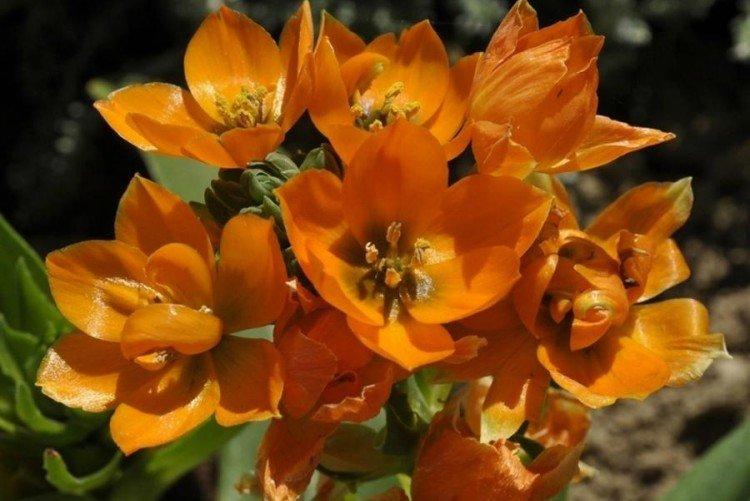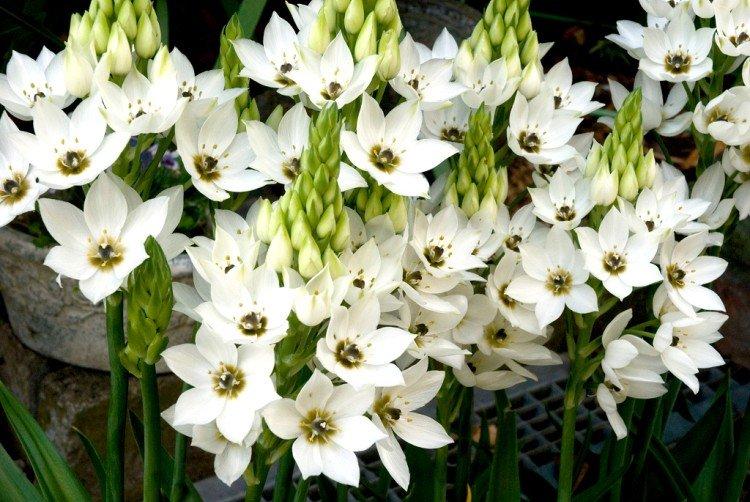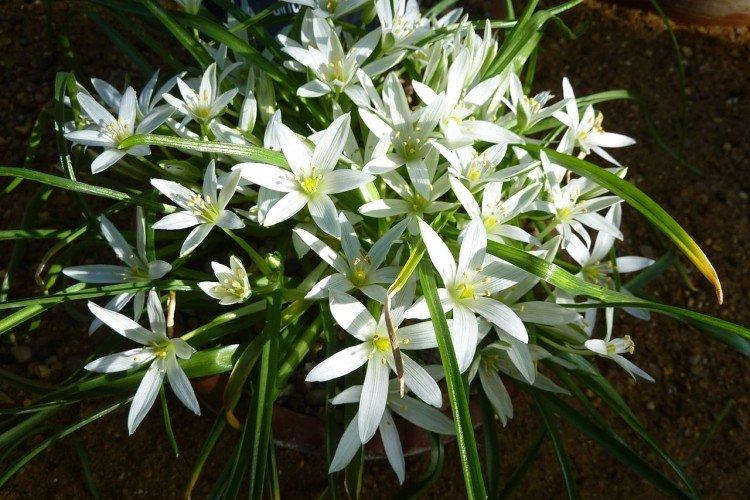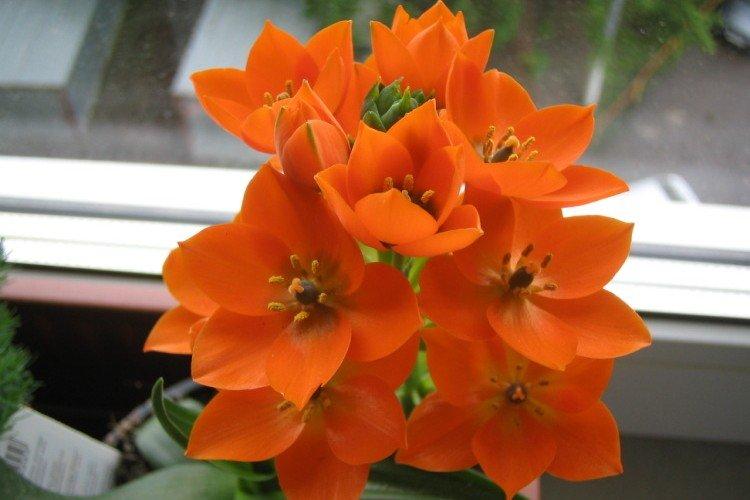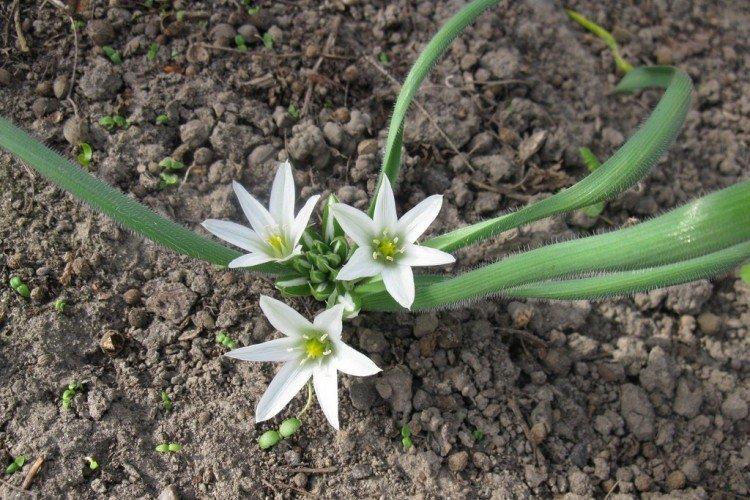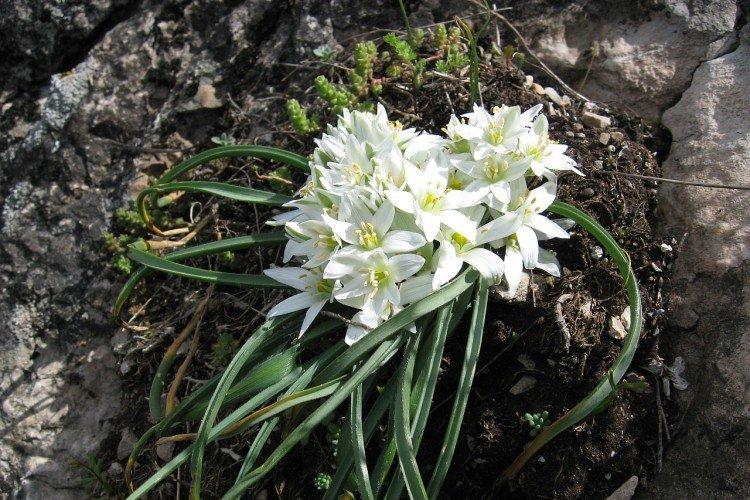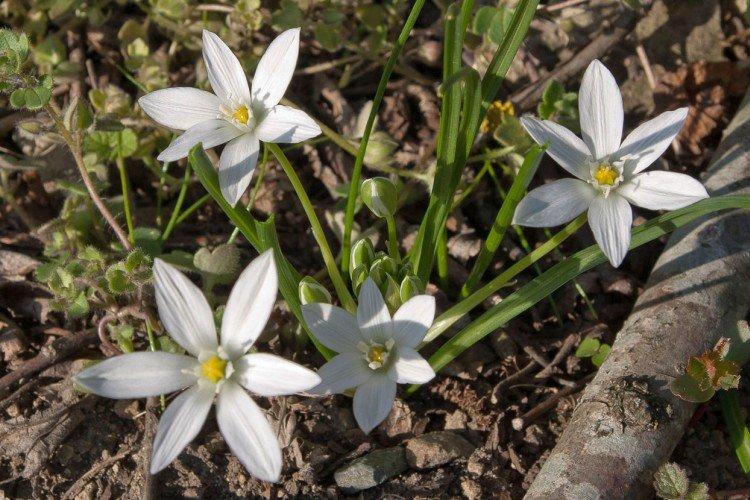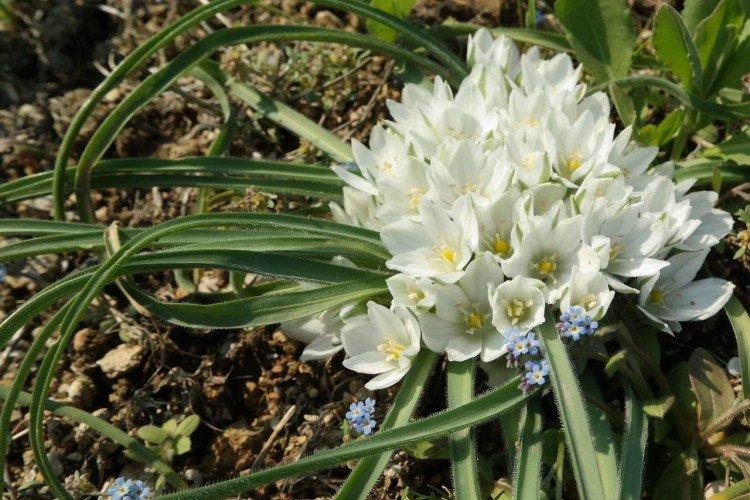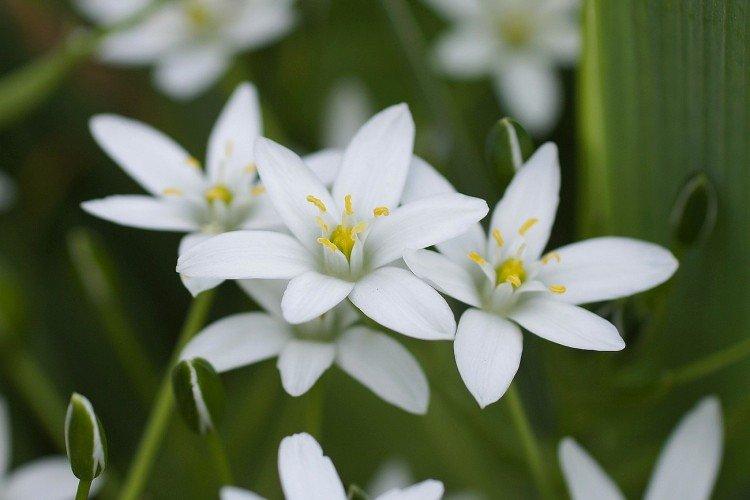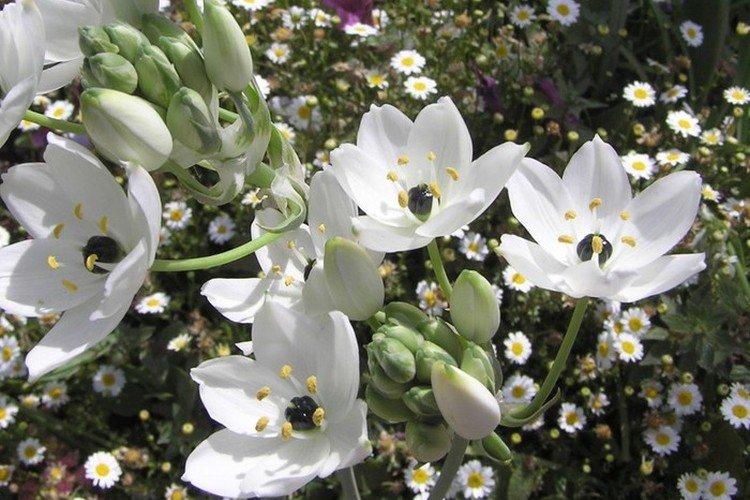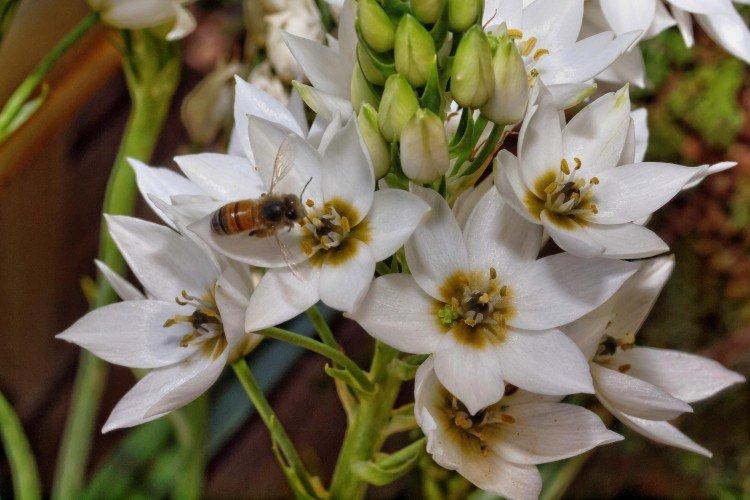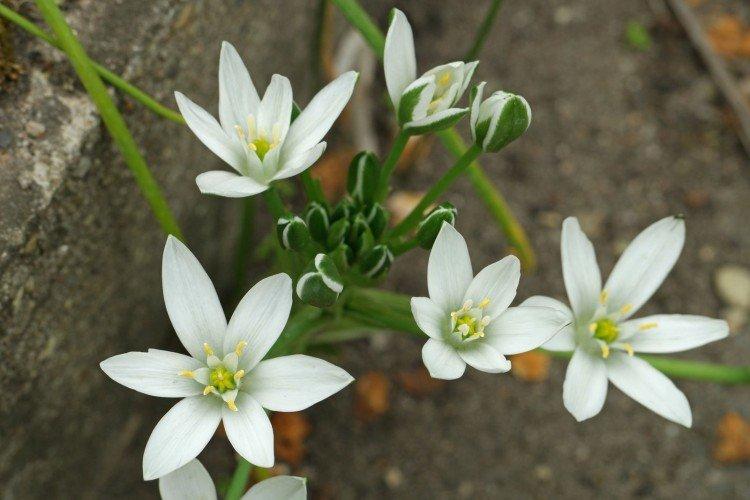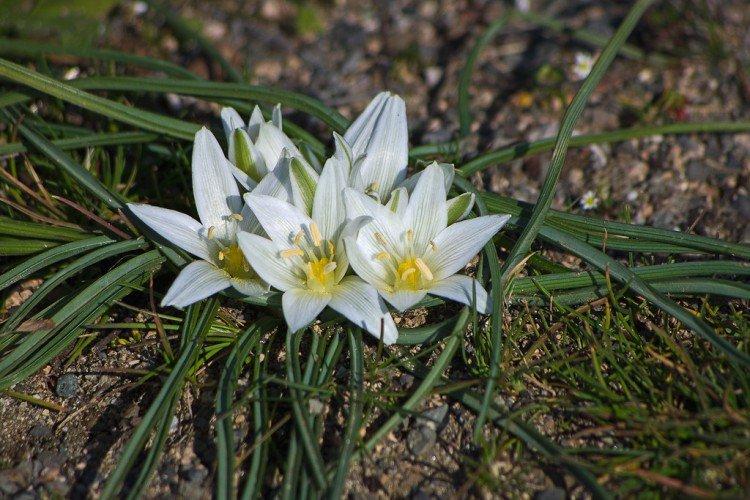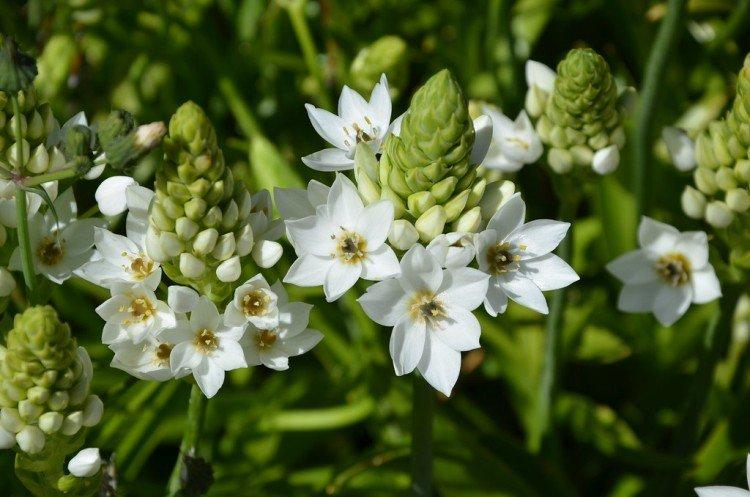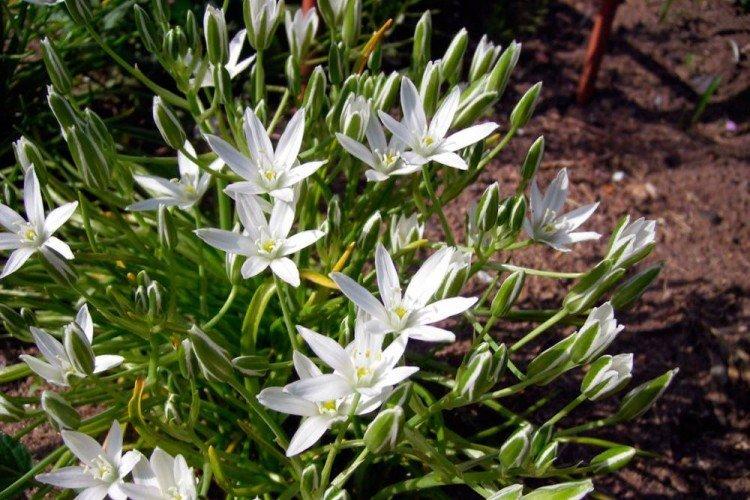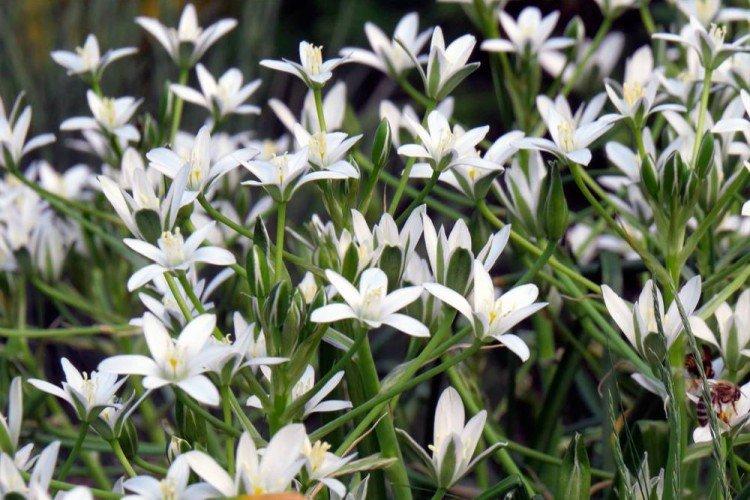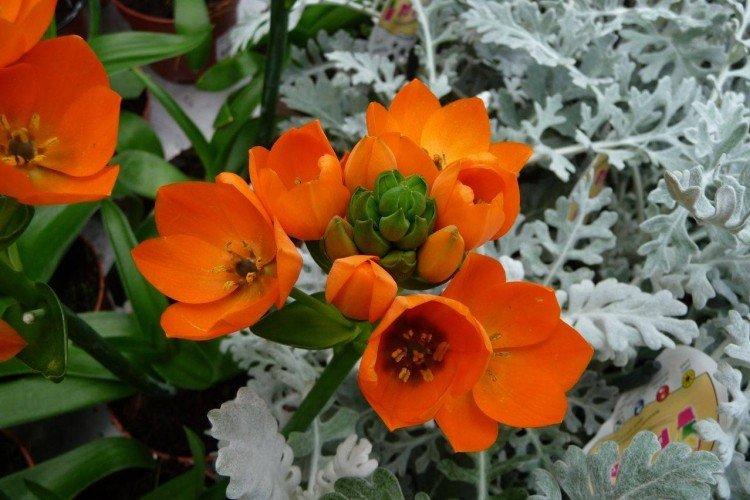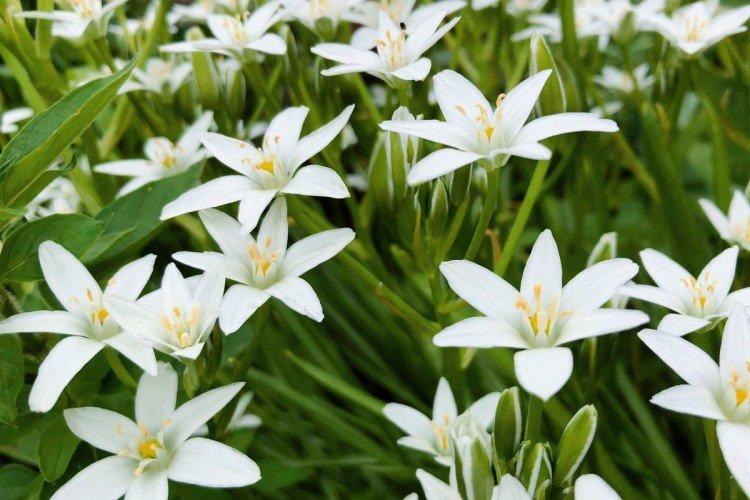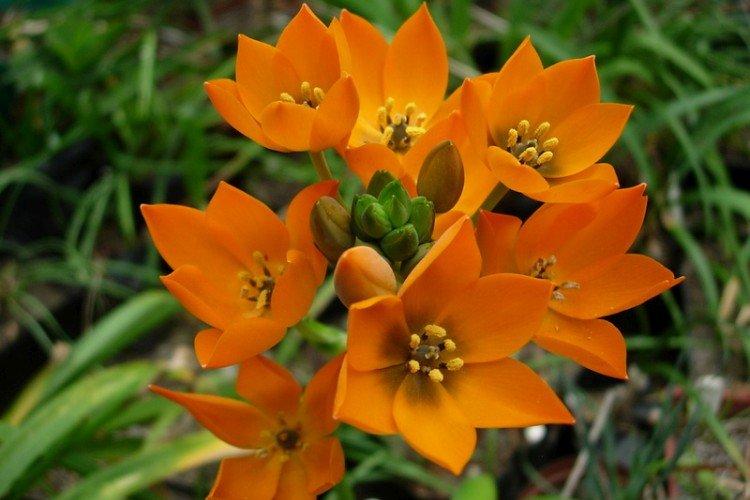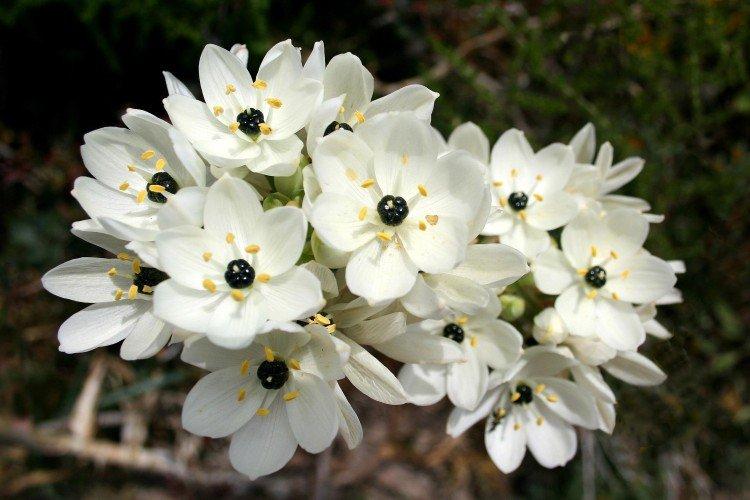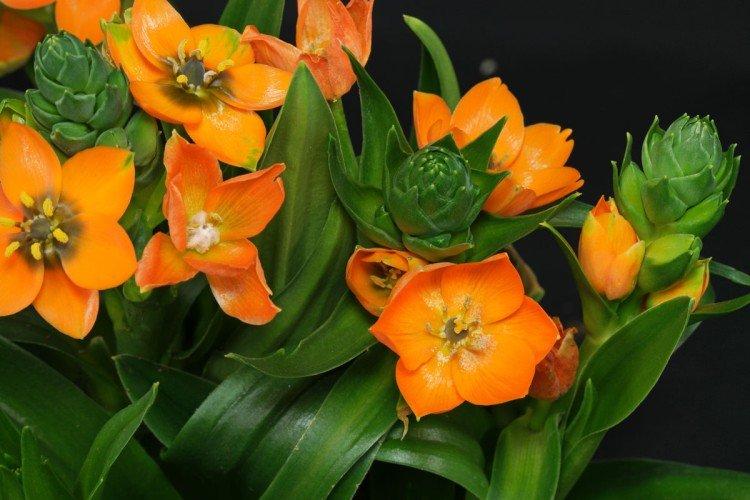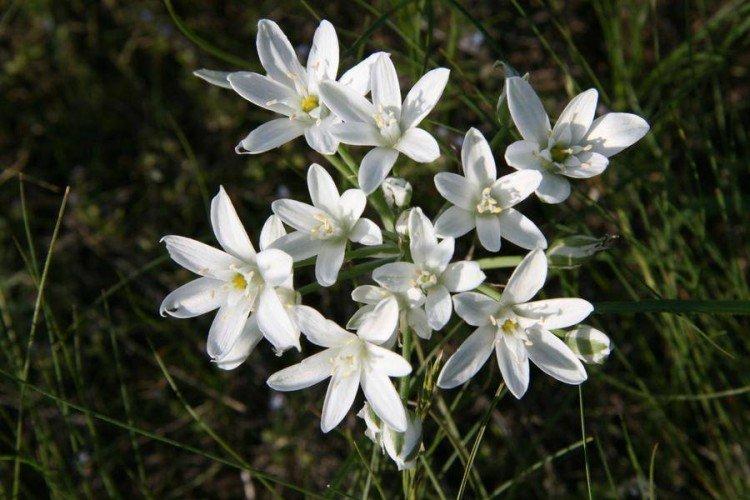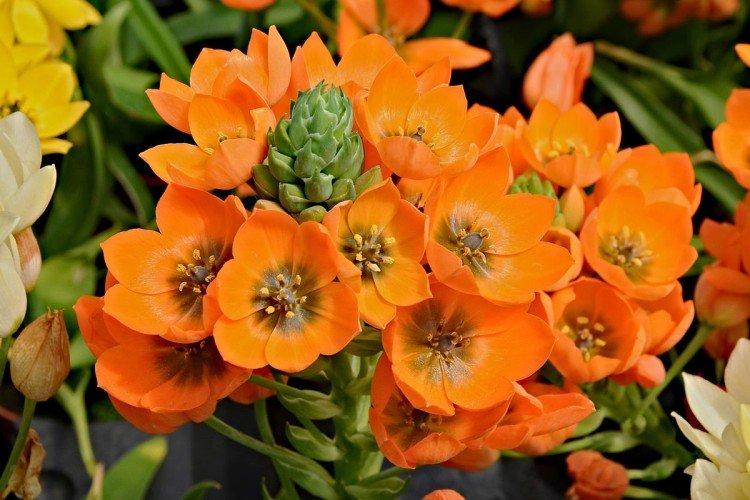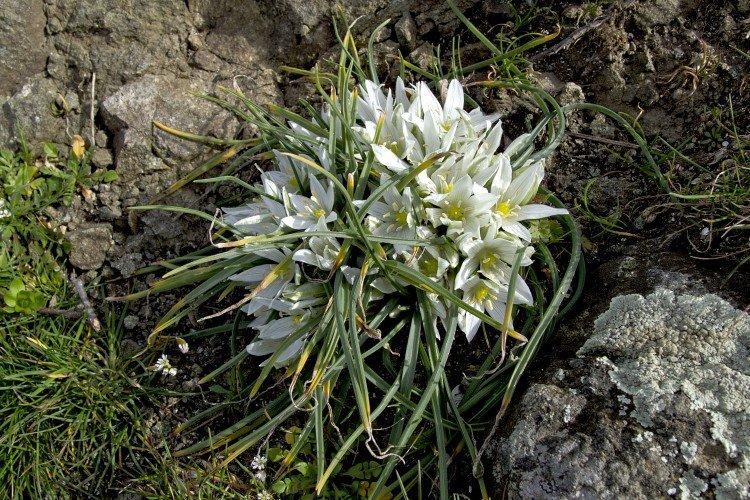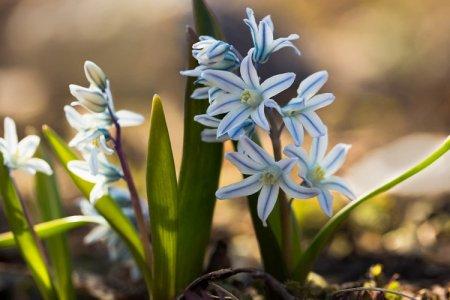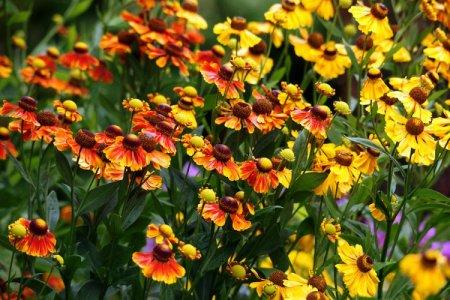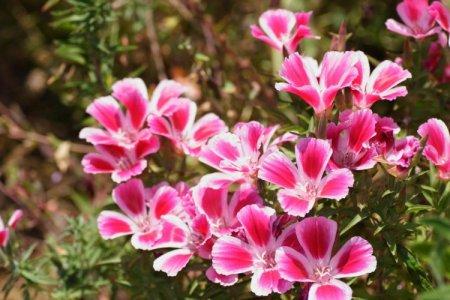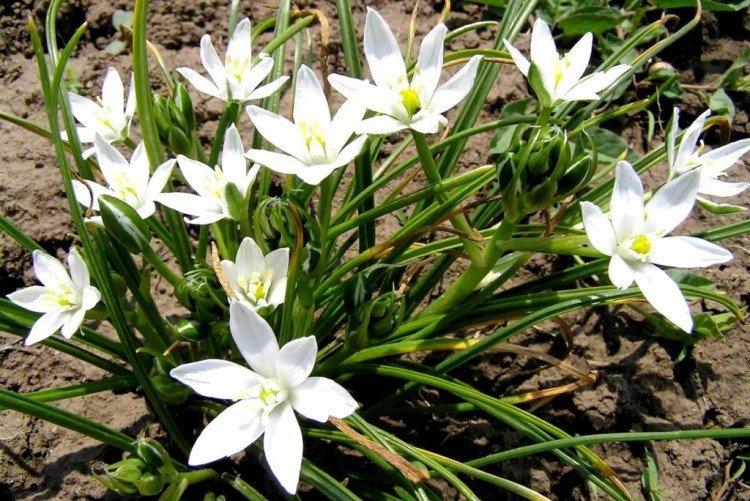
From the very beginning of May, the birdhouse blooms with snow-white star-shaped flowers, for which it was nicknamed the Bethlehem or Milky Star. The closest relative of hyacinths, it is not inferior to them in beauty and practically does not differ in the peculiarities of care. Let's tell you more!
general information
The poultry plant is a bulbous herb that occurs naturally in certain regions of Africa and the Mediterranean. Its official name is ornithogalum. Compact bushes up to 30-50 cm grow from small bulbs, but there are also taller species.
First, linear basal leaves with a light vein grow. Then - flower arrows, which are covered with racemose or corymbose inflorescences. In addition to white varieties, yellow poultry farms are very popular. Even during flowering, it has almost no smell, which can be relevant for sensitive people.
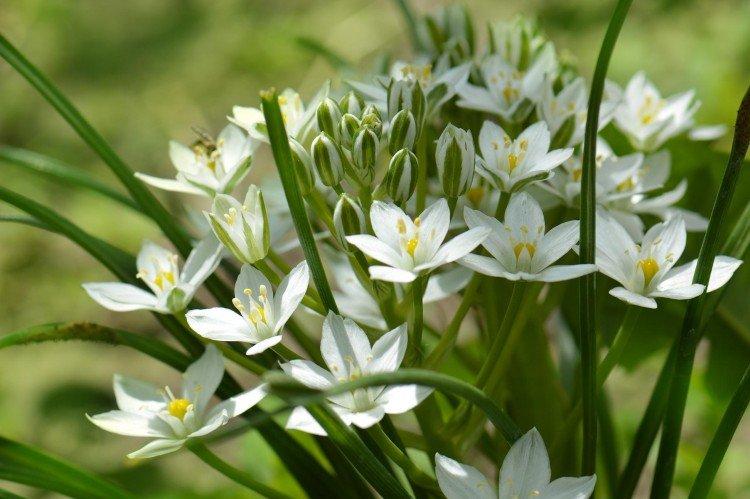
Types of poultry
Of all the existing varieties of poultry, we have selected some of the most interesting. We also want to introduce you to them!
Tirsoid poultry farm
Differs in high, up to 75 cm, peduncles and a dark center inside the flower. Each group consists of 10-15 buds, which open up to 4.5 cm in diameter each.
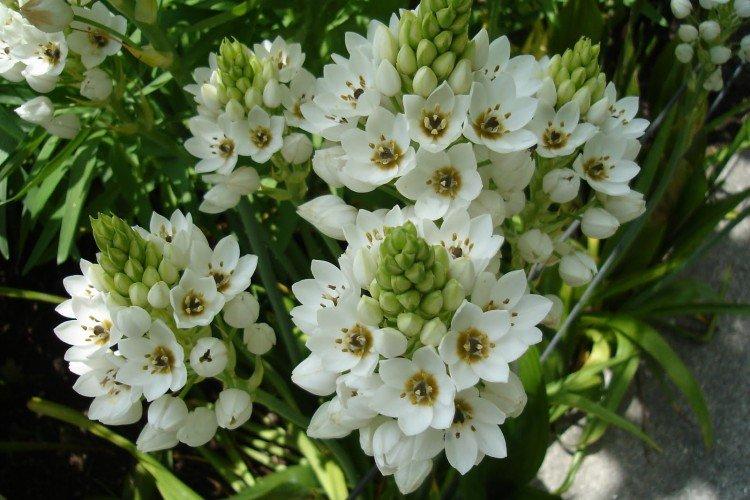
Arabic poultry farm
An excellent option for winter forcing and planting at the end of September. But in summer, the bulb still needs to be grown in the fresh air. And here it is fundamentally important to observe the temperature regime.
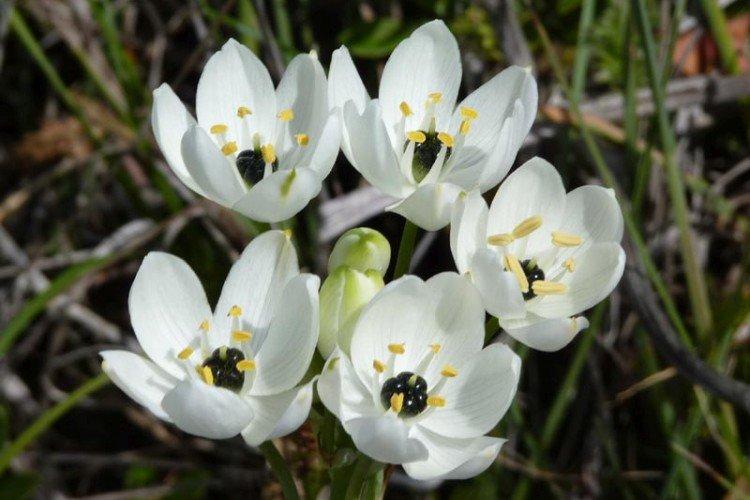
Umbrella poultry
A persistent and unpretentious species that can winter in the middle lane right in the open field. It has snow-white petals with a pale green stripe.
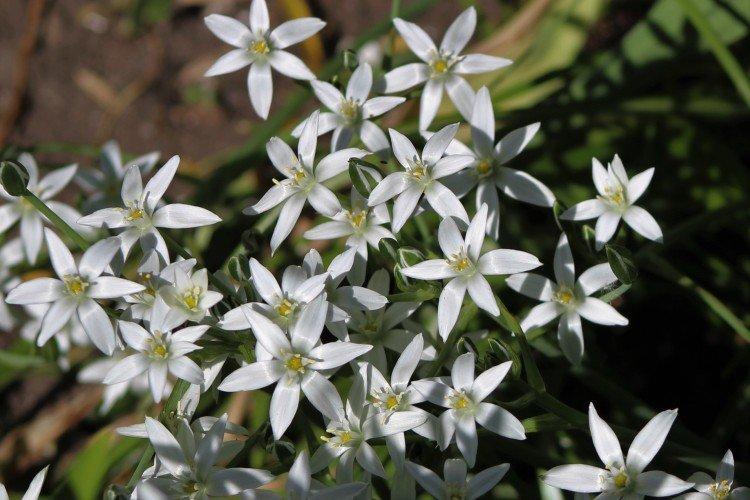
Fringed poultry
It is easily identified by its crescent-shaped pubescent leaves. They surround the inflorescence so that from a distance they resemble a fringe. In one inflorescence up to 7 small buds.
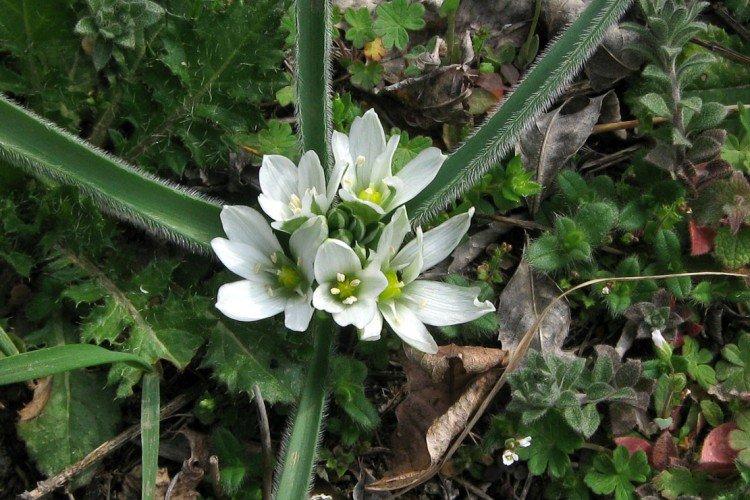
Drooping birdhouse
It is so called because of the drooping shape of the inflorescences, each of which consists of about 10 silvery-greenish buds. The height of the peduncles reaches 35 cm.
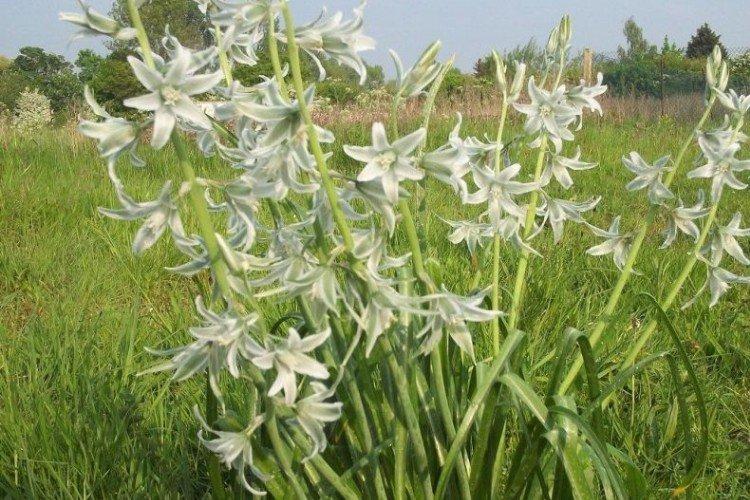
Flat-leaved poultry farm
A very compact variety with peduncles up to 10 cm and small flowers, collected in 20 pieces in large inflorescences. Its elongated, shiny leaves in a bright green hue are good too.
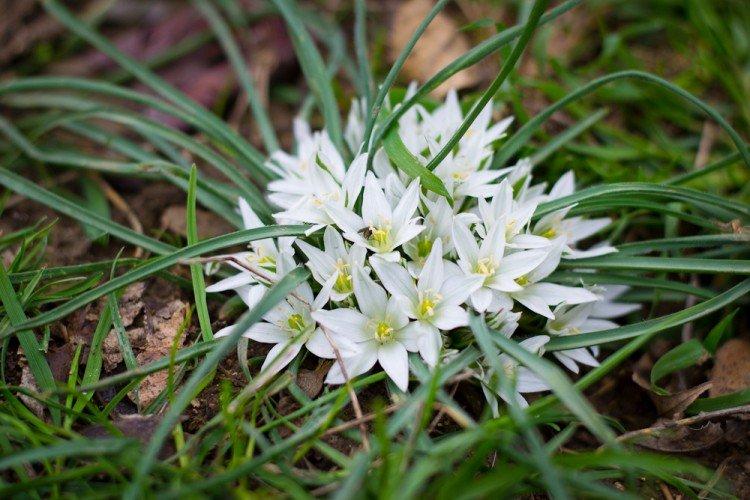
Poultry Boucher
One of the most beautiful decorative varieties with large flowers, collected in one-sided drooping racemes. The diameter of the opened bud reaches 4 cm.
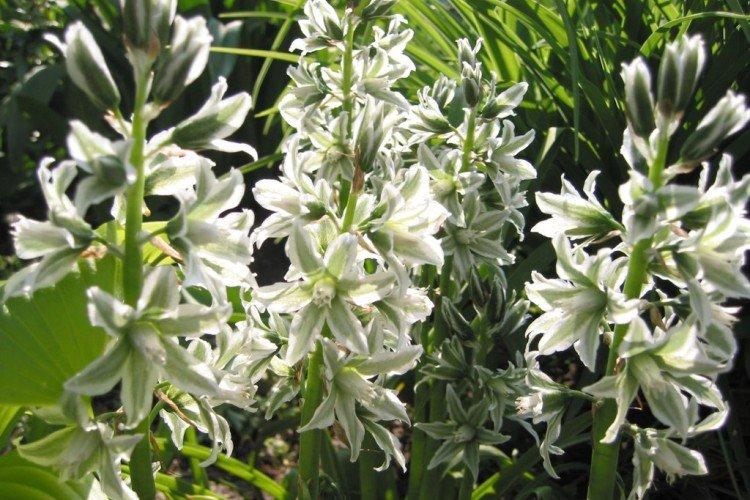
Poultry care
The specificity of caring for a poultry farm is almost the same as for spring bulbous plants. But remember that while some types of bulbs are even eaten, others are poisonous!
Temperature and lighting
The birdhouse prefers lighted places, because in spring it is not yet so hot. However, it can grow in light partial shade, just be sure to watch so that the water does not stagnate. The optimum temperature for growth starts from +5 degrees.
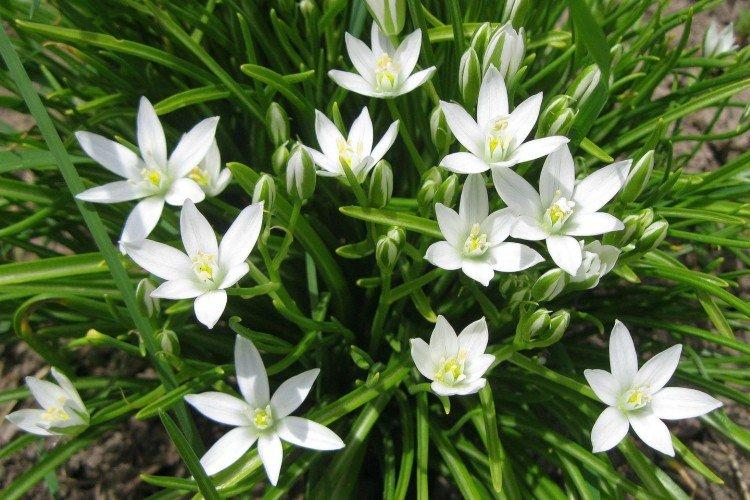
Watering
Be sure to take care of regular, moderate watering first. Do not let the soil dry out too much, but do not flood it either. The frequency is reduced when flowering begins.
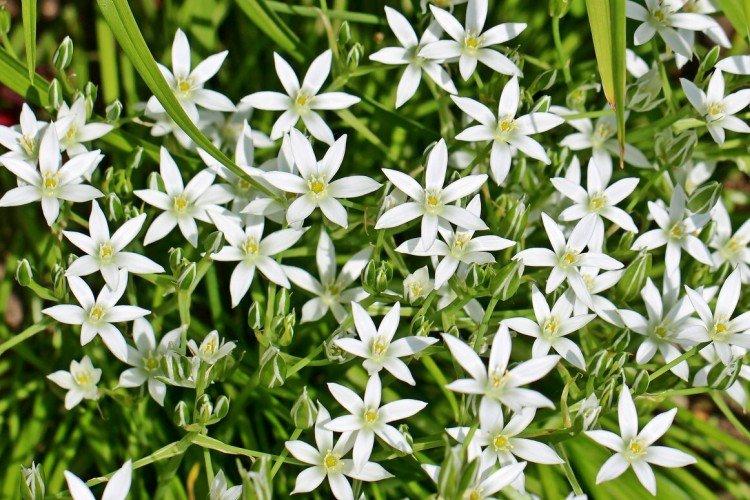
The soil
Permeable sandy soil is best suited, otherwise there will be problems with stagnant water. And this provokes the rapid development of fungal infections and the rapid death of the flower.
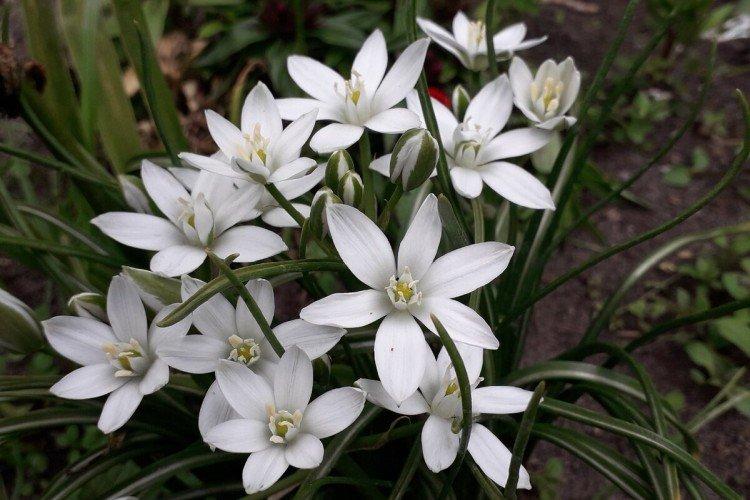
Fertilizers and feeding
The poultry farmer does not need fertilizers with sufficient soil fertility. But if the soil is poor, apply some complex fertilizers in the fall so that the bulbs have time to gain strength.
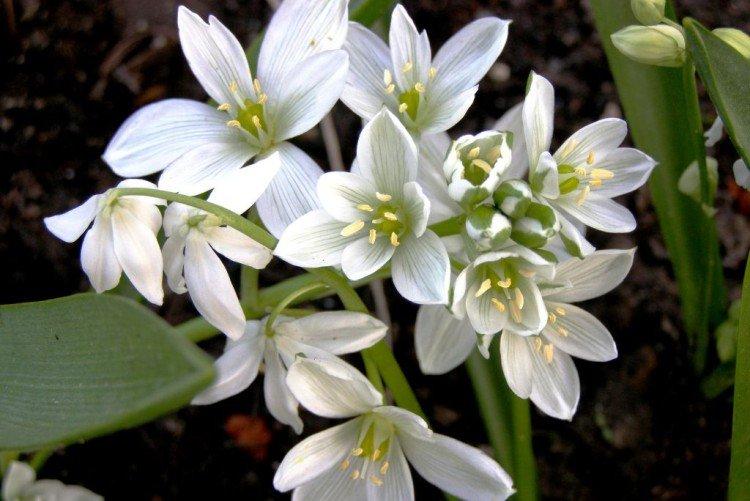
Wintering
Wait for the leaves to wither themselves and cut them to ground level. In the south, the bulbs can be left to winter in the ground, but cover them in a cold winter. Heat-loving varieties are dug up and stored in the cellar, and planted again in the spring.
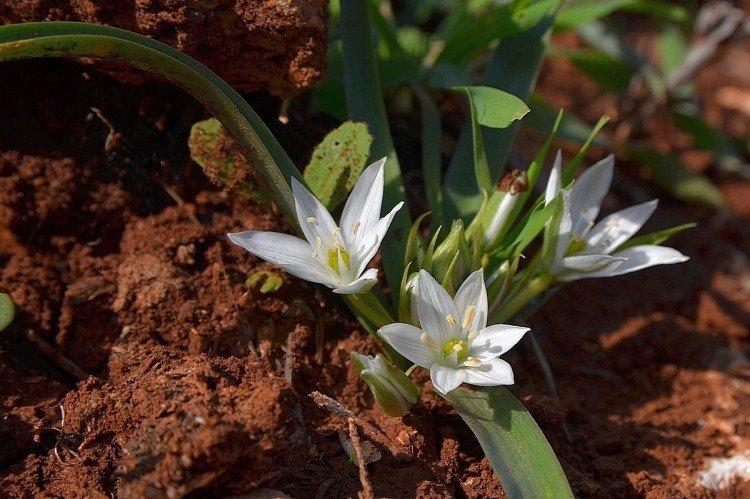
Planting and reproduction of the poultry farm
It is inappropriate to grow the poultry garden from seeds, because then it will bloom in 4 years. We advise you not to waste time and plant the bulbs right away. The planting depth is 6-10 cm, and the step between the holes is 15-20 cm. The bulbs need to be sprinkled with earth, watered - that's all.
Over time, adult bulbs can be propagated by dividing, because they rapidly overgrow with children. Even those species that winter right in the soil need to be disassembled and replanted every 4-6 years in the spring or closer to autumn.
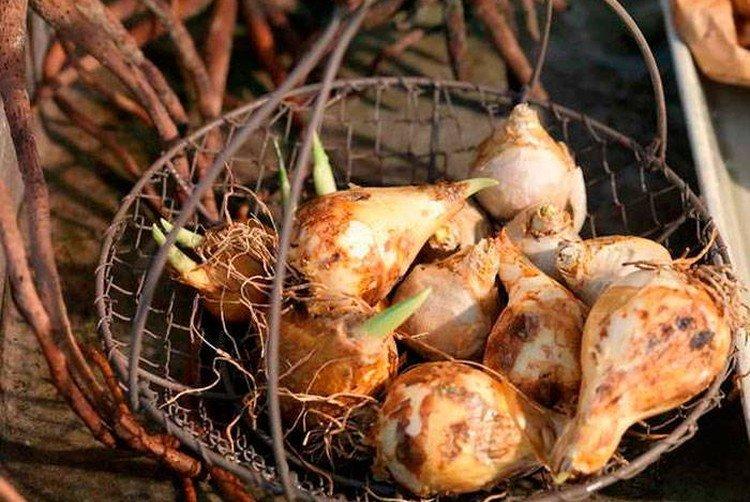
Pest and disease control
If the flower turns yellow and withers rapidly, this is the first sign of over-watering. It is necessary to destroy the plants that have begun to rot, treat the area with fungicides and establish a regime.
Onion cracker, mite and nematodes are sometimes found. To avoid this, always inspect and treat the planting material with antiseptics and insecticides.
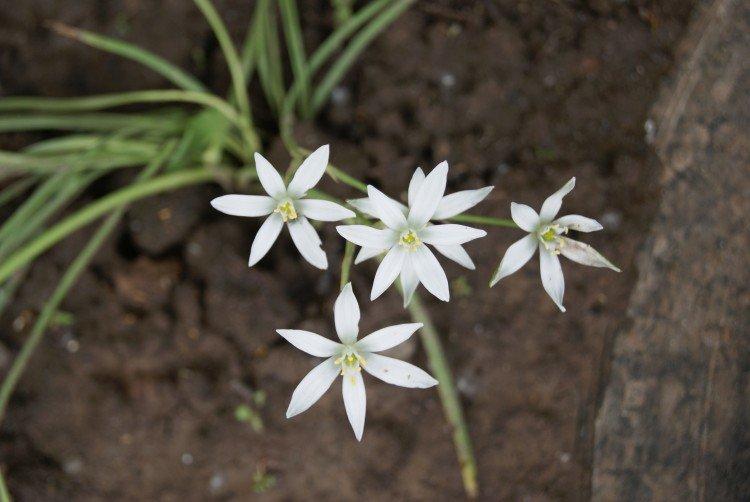
Birdhouse - photo
These blooming islands are so charming that it is impossible to remain indifferent to them. We have prepared a large selection of photos for you!
